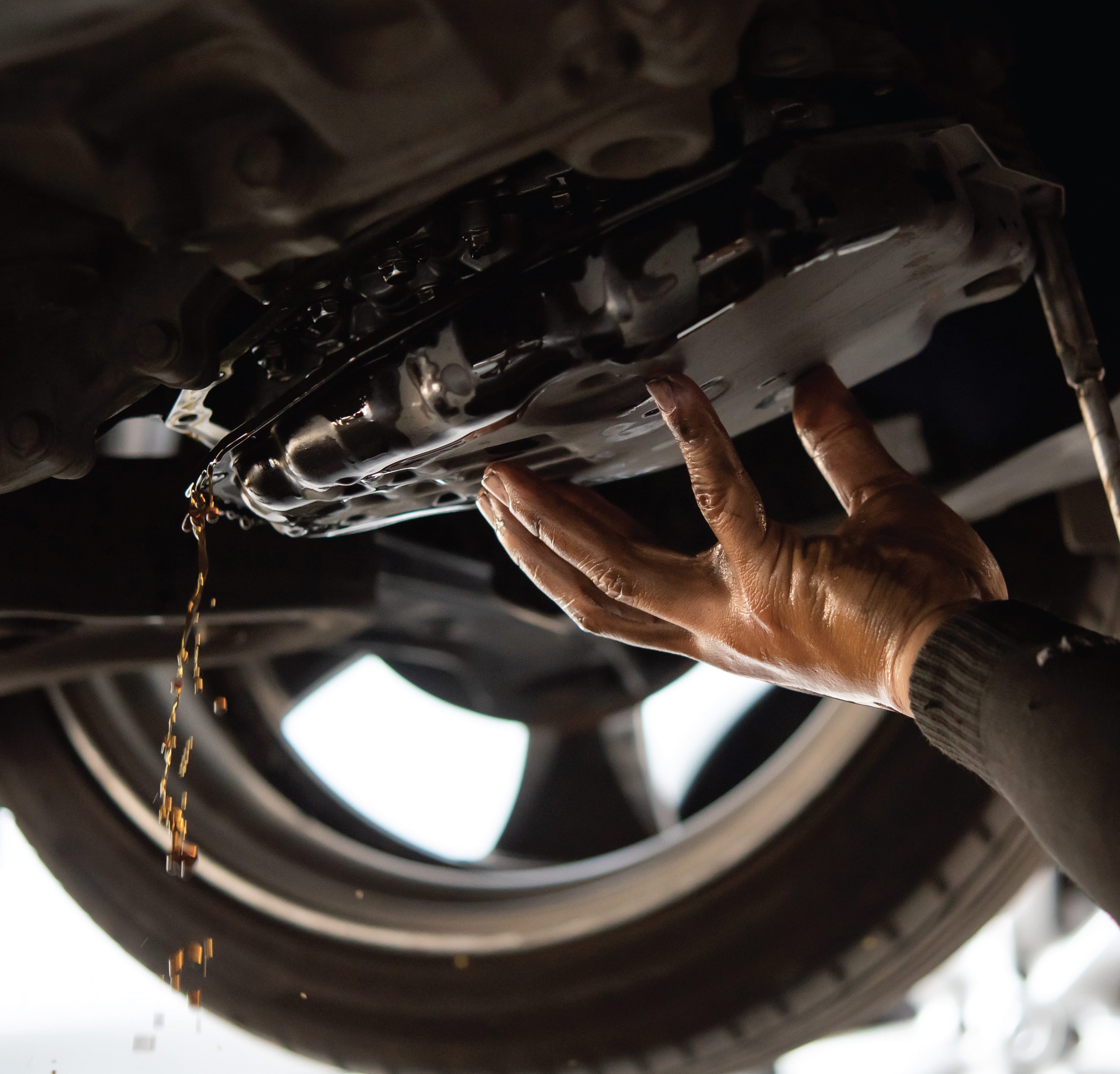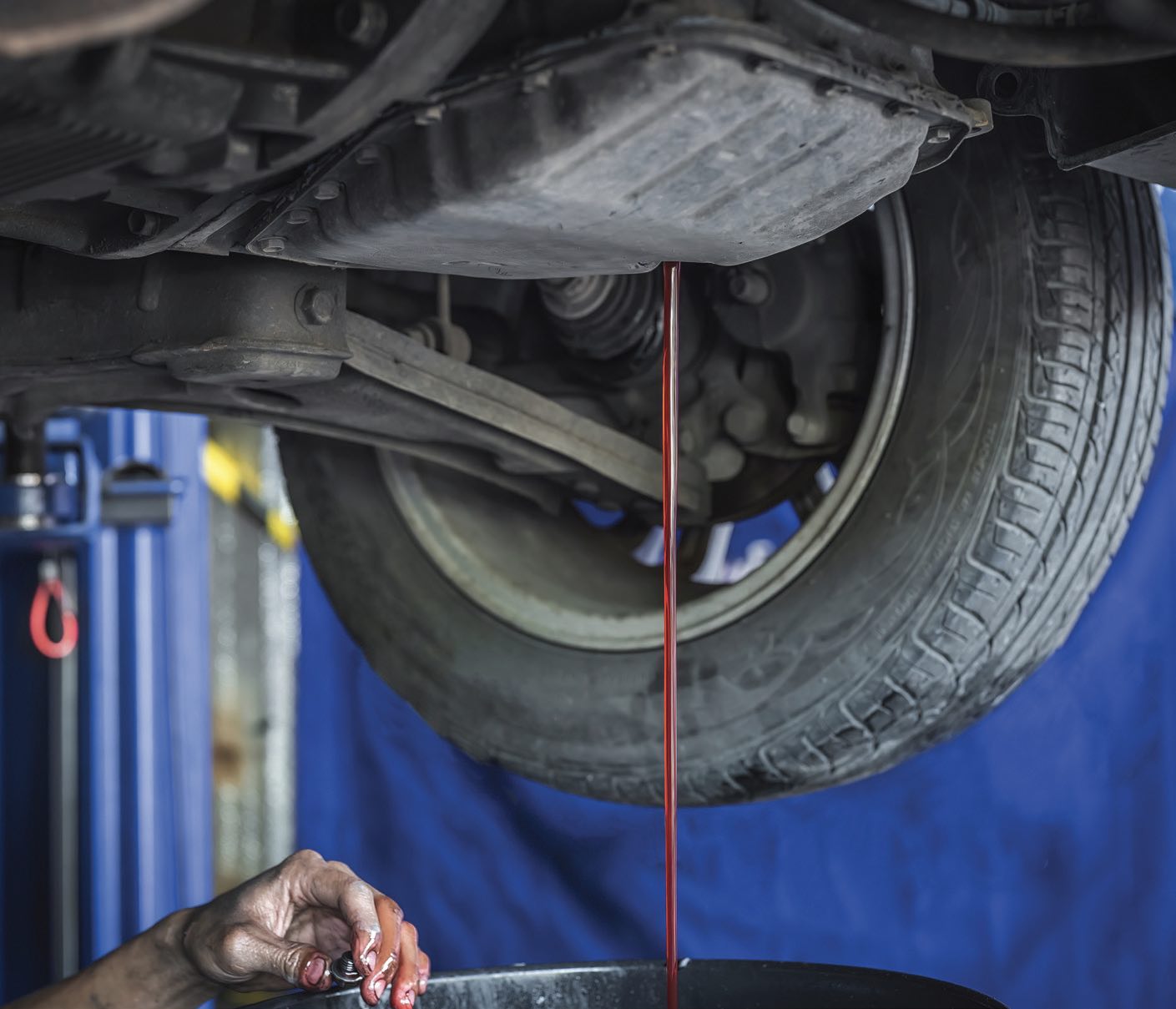Transmission fluids
By Dan Holdmeyer, Contributing Editor | TLT Lubrication Fundamentals April 2024
The type of transmission, the OEM and the transmission model are all key to choosing the correct fluid.

Last month we discussed several broad categories of automotive transmissions, each of which operates on a unique drivetrain design. Would it be reasonable to expect one transmission fluid to meet the lubrication needs of all those transmissions? Nope. If fact, there cannot even be a truly universal automatic transmission fluid (ATF) for all the various models in the automatic transmission category.
Manual transmissions being less complex than automatic transmissions require simpler chemistry in the lubricant. The manual transmissions in our 1950s and 1960s farm tractors mainly required wear protection in the form of anti-scuff (also known as extreme pressure additive), antiwear, friction modifier, foam inhibitors and corrosion inhibitors. The transmission didn’t require as much anti-scuff additive as the rear axle and differential and would typically require an SAE 90 versus 140 that also met legacy American Petroleum Institute (API) gear lubricant (GL) 4.
Modern manual transmissions require friction modifiers and lower levels of antiscuff mainly due to synchronizers. The friction modifiers enhance the synchronizer performance, and the modified antiscuff reduces the corrosivity on the copper alloy synchronizers. Improved thermal stability and seal conditioners help extend the oil life and reduce oil leaks. Multigrade gear lubricants have become more popular and thus are a requirement in these transmissions to improve cold weather performance and improve fuel efficiency. Dedicated manual transmission fluids meeting specifications such as API MT-1 are required.
Manual transmissions were more efficient, due to their direct clutch and gear engagement, than early automatic transmissions. The first automatic transmissions were introduced around 1940 to enhance the safety and convenience of the driver by not requiring clutch and gear shifting action of the driver. A fluid coupling replaced the clutch to transfer engine power to the transmission. The simple fluid coupling was soon replaced by the torque converter that incorporates a lock-up clutch activated at cruising speed for more efficiency, removing some of the inherent slippage of a fluid coupling.
ATF chemistry is quite complex, potentially requiring 15 different additives. The ATF transfers power via the torque converter and develops hydraulic pressure to shift gears. The torque converter generates additional heat in the transmission, and thus the ATF needs enhanced oxidation resistance to minimize oil deposits that would interfere with transmission functions. Dispersants help keep the deposits in suspension for the filter to remove. ATFs have lower viscosities than manual transmission fluids, and sometimes utilize pour point depressants, to enable flow at low temperatures through the hydraulic circuits and valve body. The lower viscosities also enhance heat transfer from the transmission to a radiator and help the automobile meet Corporate Average Fuel Economy (CAFÉ) targets. The right type and amount of antiwear is required to protect the bearings and gears even though the ATF viscosities are low. Friction modifiers are critical in automatic transmissions to enable clutch and brake engagement without shuddering. Detergents not only clean critical transmission components but also help modify frictional performance characteristics of clutches and brakes.
General Motors (GM) introduced its “Type A” specification late in the 1940s and its “Type A Suffix A” late in the 1950s after a few years of using a friction modifier additive supplement in an engine oil for the transmission. Other car manufacturers found the Type A Suffix A specification suitable for their transmission until the 1960s when they started introducing their own specifications. Ford preferred their transmissions to provide a hard and fast engagement of the clutches and brakes, providing positive lock-up. Very little friction modifier was required for this Ford “Type F” transmission specification. Other OEMs preferred a softer, slower engagement. This required friction modifiers to lower the static coefficient of friction below that of the kinetic coefficient of friction.
In the 1980s Ford modified its clutch engagement preferences and the automobile industry started to standardize on “service-fill” ATFs that met all major ATF specifications. This was more ideal for consumers and quick oil change stores to be able to stock one ATF and one engine oil that met all the major OEM specifications. However, in the mid-1990s, the auto industry started to abandon its universal ATF specification efforts.
Today, ATF frictional characteristics are specific not only to each OEM but quite often also to specific transmission design. Many OEMs designed and required passing proprietary tests to be approved for specific transmissions. Lubricant specifications then must change as the design changes. Most automotive transmissions are now “filled-for-life” with the OEM approved fluid. Viscosity ranges, besides frictional characteristics, are specific to each transmission as well, many times without having an overlapping range with other ATF specifications. Thus, there is no real universal ATF for today’s market.
Amazingly, to me anyway, with all the changes in the automatic transmission—the lock-up torque converter, the multiple gear ratios, more efficient gear shifting and lower fluid viscosities—the automatic transmission on average has become more efficient than the manual transmission.
Dual clutch transmission (DCT) fluids also need to meet specific frictional performance requirements for each OEM; however, the specifications are not as restrictive as for ATFs. One DCT fluid can actually meet multiple OEM specifications. The frictional properties help minimize shuddering during shifting and torque converter lock-up. Generally, the fluids are low viscosity oils with enhanced oxidation resistance to extend fluid life and minimize deposits. The fluids also provide good antiwear protection for the helical gears in DCTs, even with the oil viscosities.
The continuously variable transmission (CVT) does have the advantage on fuel efficiency over other transmissions, as it can more effectively keep the engine operating completely in its power efficient band. With proper care and maintenance, they can last as long as other transmission types. Contrary to today’s automatic transmissions, the CVT does recommended oil changes. Some manuals may say the fluid is good for the life of the transmission; however, changing the oil every 50,000 miles or so will help the transmission last 200,000 or 300,000 miles depending on the type of service it sees. A flush also would benefit the CVT in less abrasive wear from wear debris floating in the fluid. The CVT relies on metal-to-metal friction to transfer power creating a great deal of heat for the fluid to remove, which again requires fluids with enhanced oxidation resistance, plus shear stability. The fluid needs to allow the metal-to-metal power transfer but also minimize wear and shudder. Use only fluids meeting the OEMs specifications as each transmission requires unique frictional properties, much different than ATFs, and each OEM requires different types of CVT fluid.

Hybrid vehicles, depending on the motor (not the engine) location, may have a conventional CVT or an e-CVT. The e-CVT does not have variable diameter pulleys with belt or chain drives transmitting the power. The e-CVT does have a wet clutch that requires specific frictional characteristics as do the other automatic transmission types. The battery electric vehicle or the fuel cell electric vehicle does not have a transmission as the e-motor is either in the axle or the wheel hub.
Much work is being done in addressing specific lubrication issues with electrified transmissions, such as wider temperature ranges, electric voltage, copper wiring and unique frictional requirements. The myriad of variables hybrid and electronic vehicles present continue to be studied and addressed but are too numerous to cover in this article.
For those of you with older transmissions, many OEMs still maintain specifications for them, and some may allow and even encourage a fluid change. Although not all CVT OEMs recommend fluid changes, a flush or oil change can extend the transmission life. Reputable oil change service providers may offer transmission fluid exchange or a transmission flush.
A transmission fluid exchange requires removing the transmission pan to allow the fluid to drain from the transmission but does not remove much, if any, of the fluid in the torque converter. So, not even half of the ATF is exchanged. Once the pan is removed, the fluid filter can, and should, be changed. This will not remove the contaminants from the transmission, but the new filter can trap more of the contaminants as the unit runs. With the right garage set up and equipment, one can change the fluid in manual, dual clutch, continuously variable and older automatic transmissions.
A transmission flush removes all the fluid from the transmission, torque converter and cooler lines and replaces it with fresh ATF. Flushing also removes contamination from the system. Special equipment is needed to complete a transmission flush and some service providers include a special cleaning solution flush between removing the old ATF and introducing the fresh ATF.
Whether you change your transmission fluid yourself, or have a professional change it for you, you will need to identify the type of transmission you have, the OEM and the transmission model to know what fluid to put back into your transmission—or, if you even need to, or should, change the fluid. If you don’t use the right fluid, you may be changing your transmission before you change the fluid again.
Dan Holdmeyer is retired from Chevron Lubricants and is based in Washington, Mo. You can reach him at dan.holdmeyer@gmail.com.